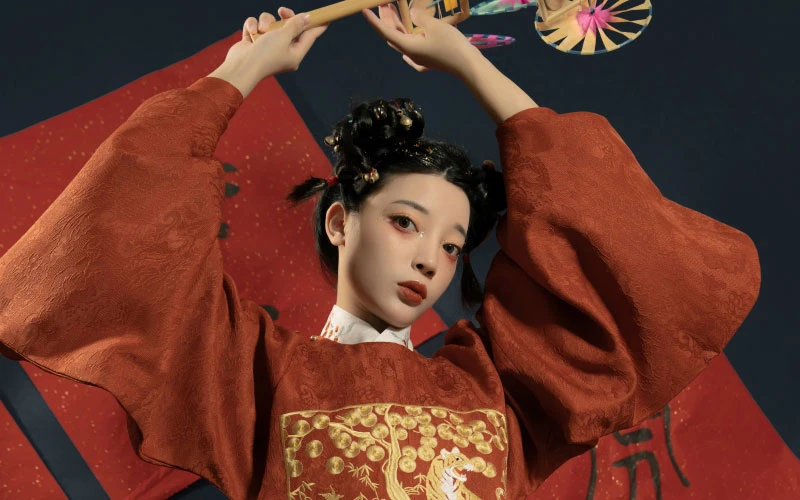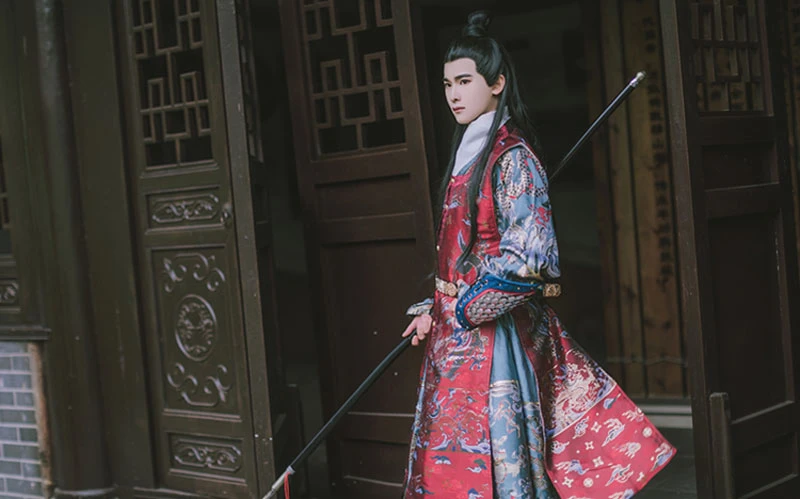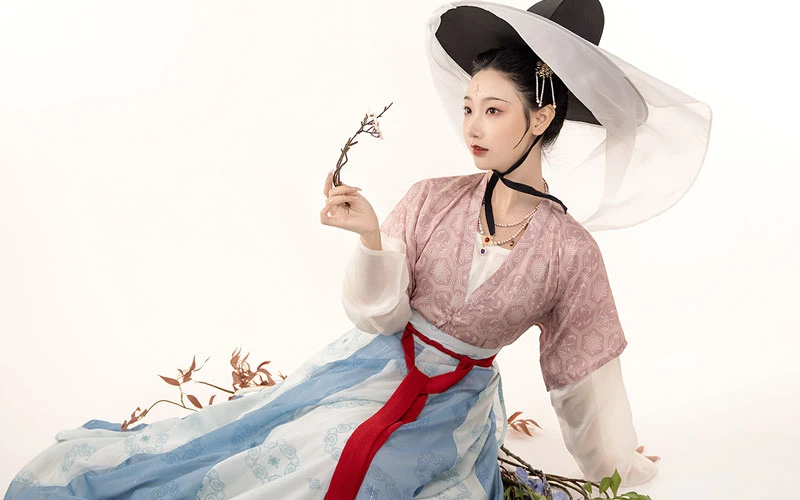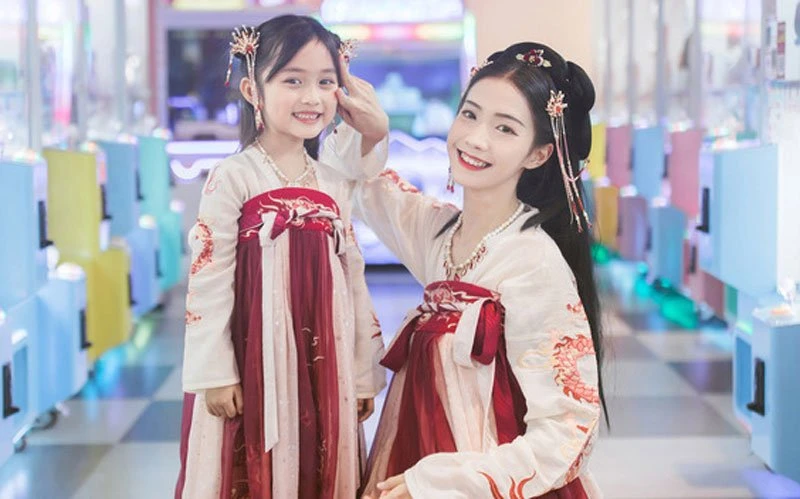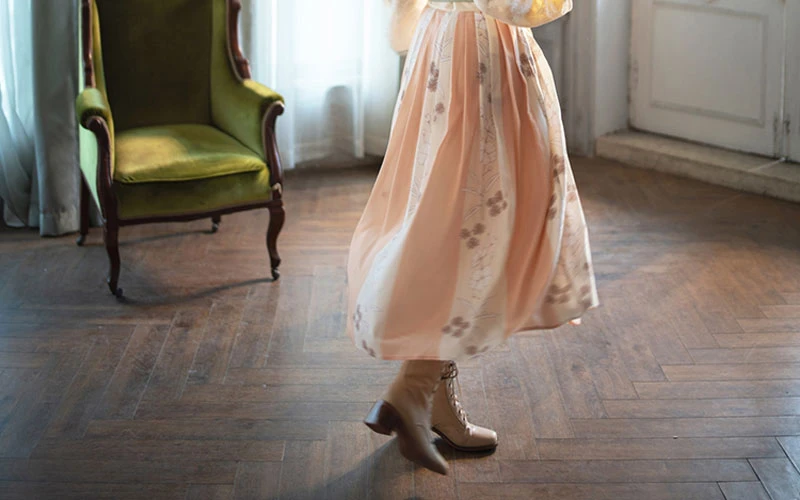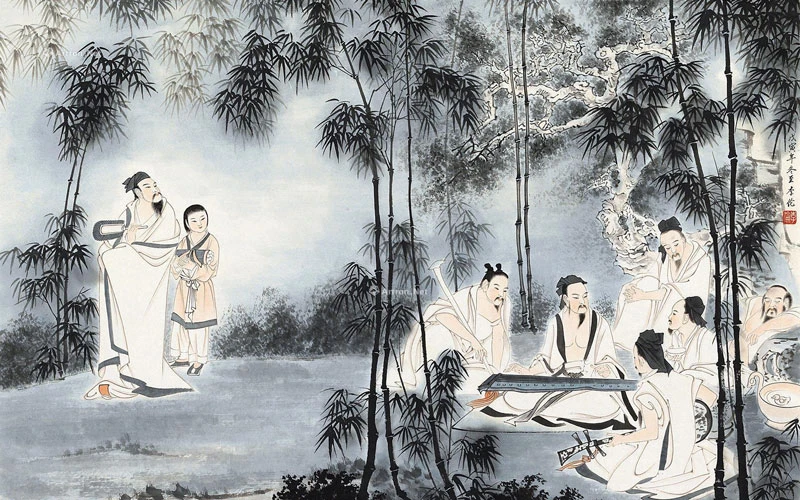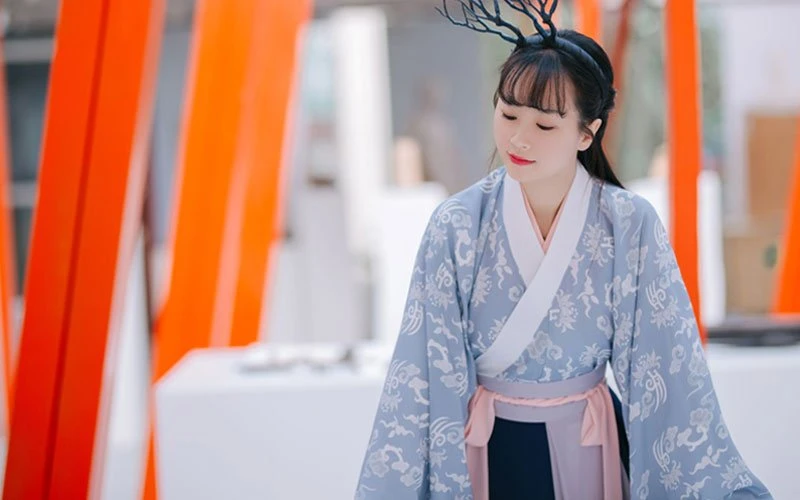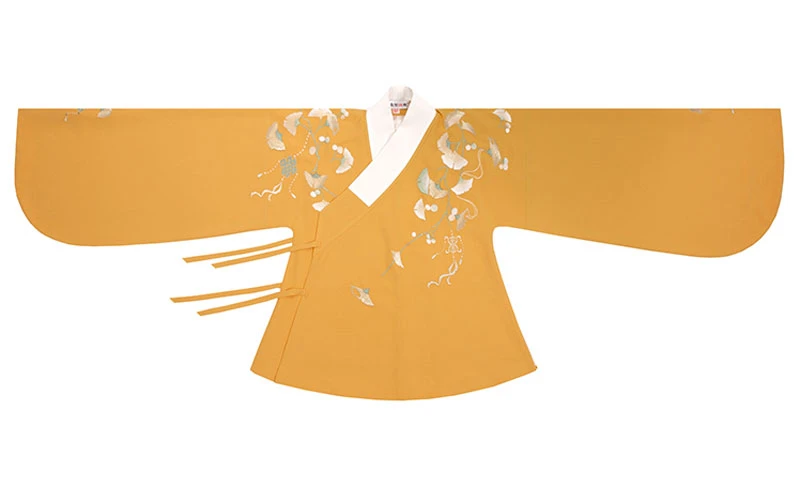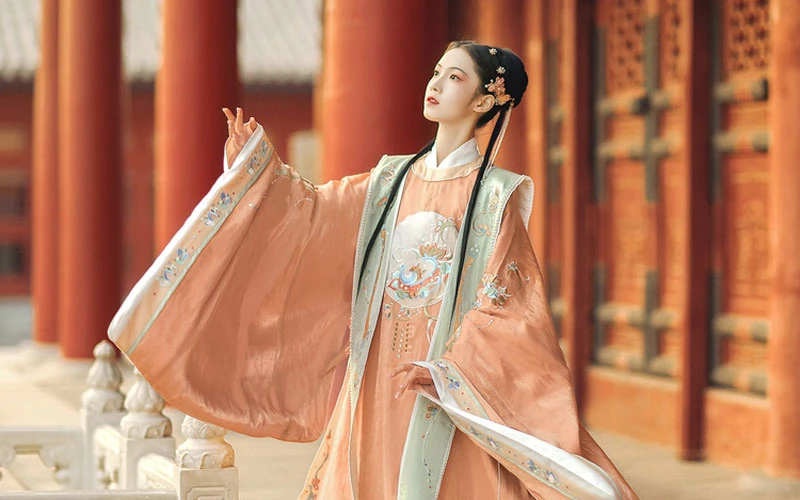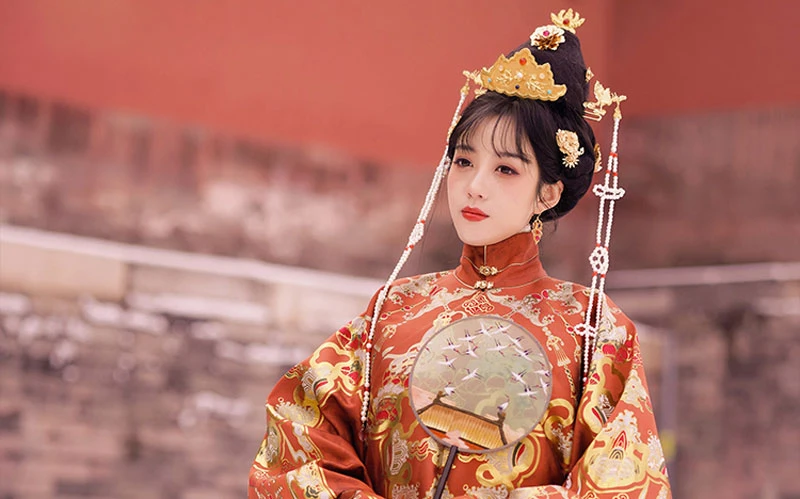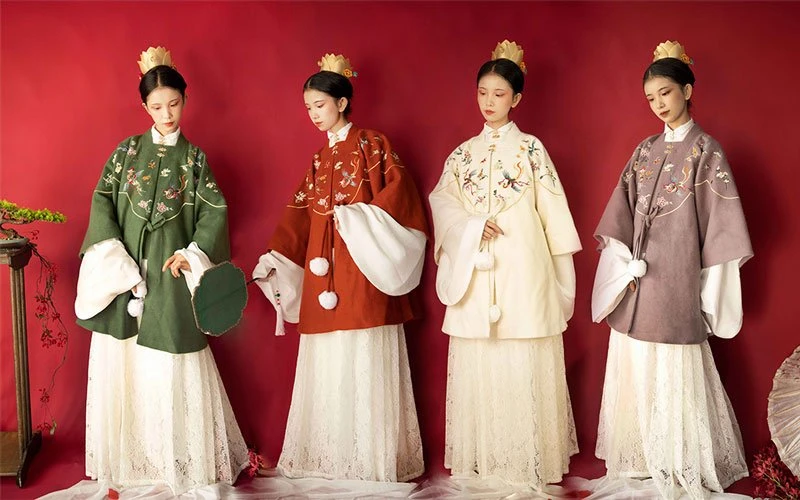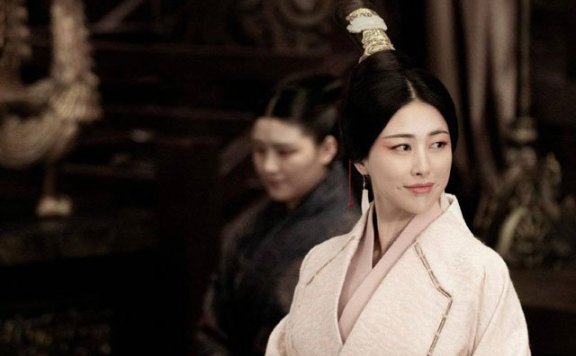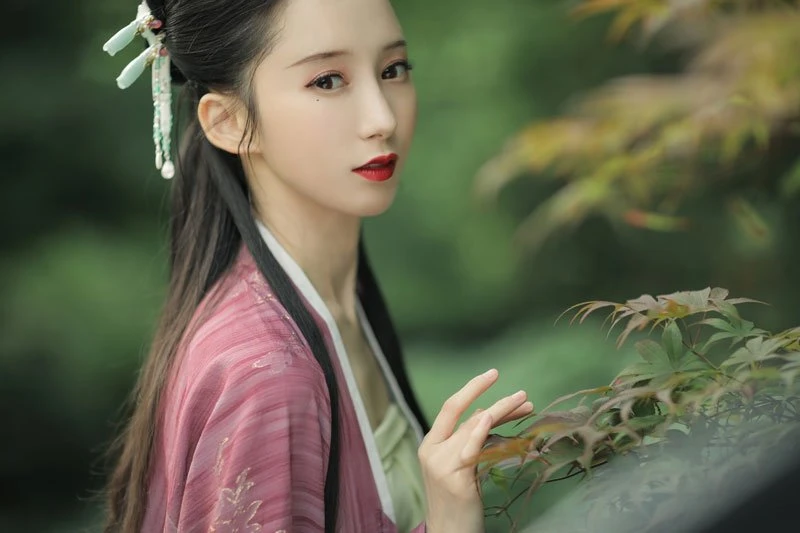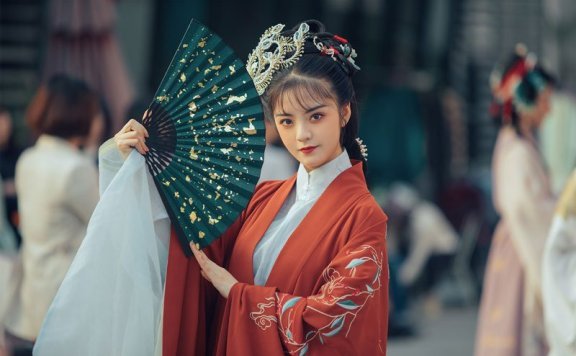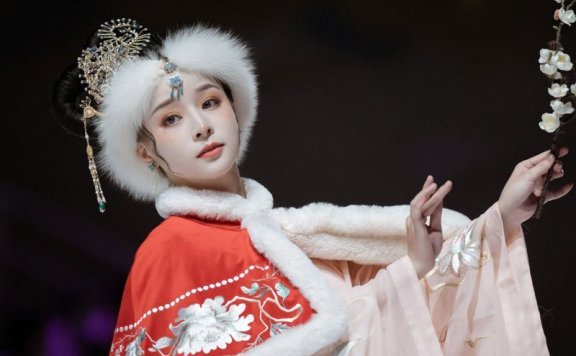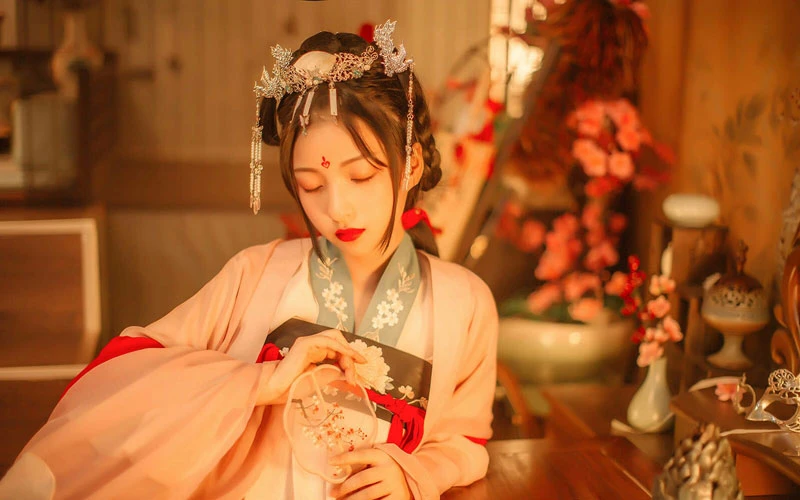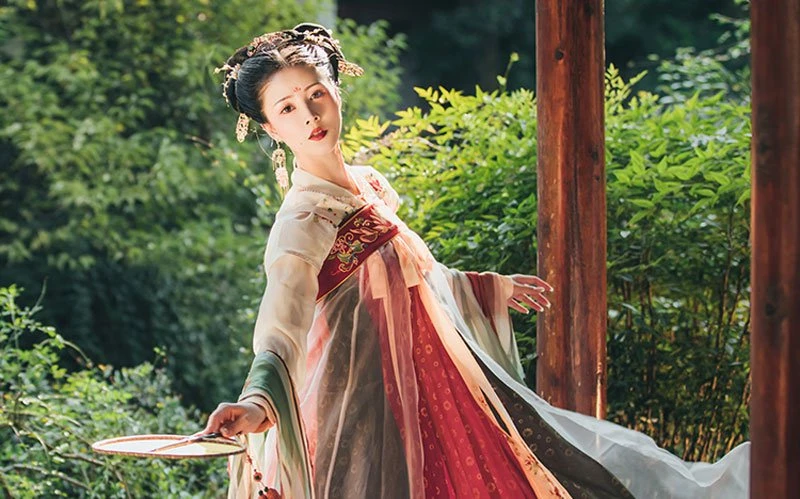Article
搜索结果:
-
Men’s Clothing Changes During the Ming and Qing Dynasties
This article focuses on the changes in the popularity of traditional Chinese men's clothing from the Ming and Qing dynasties to the early Republic of China. The early Ming dynasty clothing continued the style of the Yuan dynasty, men's clothing in addition to Zhishen (直身), but also have Changshan (长衫) style. At this time the Daopao (道袍) has not yet formed, because the Changshan pleated structure on both sides, inferred that may be the Daopao predecessor. The prototype of the Yisan (曳撒) came from the Yuan Dynasty, and the sleeve shape and silhouette gradually changed in the Ming Dynasty, and developed an outer hem structure, which was one of the common styles of Bianfu (便服)/army clothing or Jifu (吉服) in the Ming Dynasty. The more significant change in the mid-Ming men's clothing is the gradual widening of the sleeve type, the structure of the outer hem is also different from the initial period. Late Ming dynasty men's clothing popular with the Daopao, the initial sleeve type for the bias to straight sleeves, with the structure of the Shoumei (收袂). At the end of the Ming Dynasty, the robe has developed into wide sleeves, and the structure of the inner and… -
Chinese Hanfu Hairstyle Tutorial – 3 [Without Wig Buns]
Not enough hair volume to braid? Wear a wig and feel too heavy? Not sure what kind of hairstyle to wear with your hanfu? Let's learn a simple hanfu hairstyle (without adding a wig) today. 1. First divide the hair into the front and back, divided into areas as shown. 2. Divided into four parts, respectively, tied into braids. 3. Divide the back of the ponytail into two bunches, tie the leather band in the middle, with the leather band as a crossover point, and wrap it backwards respectively, similar to a bow. 4. Tidy up the end of the hair to the back of the head, fixed with a hairpin. 5. Wrap the three braids in front around the back, paying attention to the middle one to end up a little bit, and adjust the position in the process. 6. Prepare a hair tie, tie the hair tie to the head. 7. Finally put on your favorite hair accessories. More about ancient Chinese Hanfu hairstyles can be found at Hanfu Makeup Group and Hanfu Makeup tag. -
How to Make Red Hanfu Look Great in the New Year
There are only 8 days left before the Chinese New Year, so it's perfect to wear red Hanfu for the New Year. It just so happens that more and more people are asking about Hanfu styles for the New Year, so let's take a look at the styles that Hanfu Time recommends and share with you "how to wear the red Hanfu with a sense of sophistication". 01 - Why are the Chinese passionate about "red"? Of the five Chinese colors, why is red the only one that is the representative color of China today? As early as the pre-Qin period, "The Art of War Annotated" wrote: "There are only five colors, yet the variations of the five colors produce a beauty that is incomparable to see." Red, yellow, black, white, and blue, which of them can actually be said to be common. But when you come to China and see the brightly colored Ming Dynasty buildings left by history, from the large red walls, Zhu Men (朱门, in ancient times, the gates of noble houses would be painted red to show their dignity.) and lanterns to the small lacquerware, Hua dian (花钿) and rouge, there is no color as… -
Gorgeous Zhaojia - Traditional Chinese Outfit for Males
Today, Hanfu Culture Society will introduce Zhaojia (罩甲) to you, a very handsome traditional Chinese outfit for males. [Structure and History] Zhaojia, square or round collar, lapels, metal or cloth buttons, sleeveless or short sleeves, slits on both sides. This structure is very convenient for horseback riding and movement, and it is mostly used as an outer garment on top of the Tieli (贴里) and Yisan (曳撒). Zhaojia first originated in the Hongwu period of the Ming Dynasty, and it can be found through ancient painting materials that Zhaojia was generally used as a military uniform in ancient times, and was very common during the emperor's hunting trips and in ceremonial processions. Most of the Zhaojia used by the royal family were decorated with patterns such as woven gold dragons in Yunjian (云肩) and Xilan (膝襕), the famous Asian Art Museum of San Francisco has a piece of Zhaojia (from the twenty-third year of the Wanli) in its collection, which is decorated with a dragon motif and a prominent gold "卍" pattern. The bottom of this Zhaojia is decorated with dragon, colorful clouds, and mountain and sea patterns, which is very gorgeous. In addition, Zhaojia still popular in the folk,… -
Top 3 Hanfu Fashion Trends for 2021
As the Chinese Lunar New Year is getting closer and closer. It's definitely time to start the New Year with a brand new Hanfu! Maybe you're still torn about choosing a Hanfu, in this post Tongpao App predicts the top 3 Hanfu fashion trends this year, hope it will be helpful for you. 01 Color Not long ago, Pantone released its 2021 colors: Ultimate Gray and Illuminating, suggesting that the vibrant warm yellow and calming, reliable gray support each other like the light at the end of the tunnel, bringing hope. And from November 2020, red become the popular color in the search of shopping platforms. Some organizations expect that the popular color in China in 2021 will be "Lychee red (给荔红)", a color close to the shell of lychee. It is also worth paying attention to. Whether it is Ultimate Gray, Illuminating, or Lychee red, it can be very nice to apply to Hanfu costume. For example, illuminating color is eye-catching, and it's perfect for a small area to be worn as a finishing touch! Can also be used as a matching color. The calm gray belongs to the neutral color, can highlight the texture of the fabric. If… -
Latest Traditional Chinese Dress for Kids
Hanfu & Traditional Chinese Dress for Kids Hanfu is becoming more and more popular among young people, and traditional clothing has also attracted more attention. And children have always been cute pronouns, but what kind of surprises will there be for children to wear traditional Chinese clothes. This issue brings traditional Chinese dress for kids, so that they can also wear Chinese clothes and feel the power of traditional culture together. What kind of clothes did children wear in ancient China? It is generally believed that children in the history of China do not have their own clothes, and children have been wearing a reduced version of adult clothes, but in fact, but it's not all that. Ancient Chinese Dress for Kids Qiangbao (襁褓, swaddling) The clothing of newborn babies is more common: Qiangbao. Qiangbao was widely used in ancient China from the court down to the people. According to the literature, Qiangbao as an ancient child care product has been widely used as early as the Shang and Zhou dynasties. The term "Qiangbao" was later used to refer to babies under the age of one year. Doudu (兜肚) Doudu, with naked back when wearing, has the function of heat… -
How to Match Boots for Hanfu in Winter?
What kind of shoes do you usually choose to match your Hanfu? Perhaps in winter, there are more options than embroidered shoes that can also add a matching style to your Hanfu. For example, boots or leather shoes. Hanfu Shidai gives us some advice on how to match boots for Hanfu in winter. 01 - Hanfu with Boots - Fashion from Ancient Times The reason everyone is suitable for embroidered shoes is that they are flat designs, as the flat structure can be a good visual solution, unless you wear a pair of shoes with colors that really don't match the outfit. But with boots, there are more things to consider, so the boots that have appeared since ancient times can be said to be a design that breaks the traditional plane. In terms of the genesis of boots in ancient China, they basically started with the nomads in northern China in ancient times, because of the wear and tear of the grass and stirrups on the shoes, so they needed to have boots with thicker heels and higher uppers to cope with the demands. During the Wei and Jin dynasties, boots were introduced to the Central Plains, and were… -
History of Hanfu Costumes in the Wei and Jin Dynasties
The Rebel Princess (上阳赋, Shang Yang Fu) is a recent Chinese fictional costume drama that receives more attention, based on the background of the Eastern Jin Dynasty, starring Zhang Ziyi and Zhou YiWei. Although the costumes and props in "The Rebel Princess" are exquisite, but they are not fully restored according to history, so we will not discuss them too much and just enjoy them in the plot. But let's take this opportunity to review what the costumes in the Wei and Jin dynasties were like. The basic situation of the Wei, Jin, and Northern and Southern dynasties periods First of all, let us briefly introduce the basic situation of that period: "Wei, Jin, Northern and Southern dynasties (魏晋南北朝)", which is a compound term for several dynasties collectively, but the dynasties or countries included in it can be as many as dozens. The period before the Wei, Jin, Northern and Southern dynasties periods was the Three Kingdoms period (Wei, Shu, and Wu), with "Wei" referring to the state of Wei in the Three Kingdoms, and "Jin" mainly referring to the Western Jin dynasty built by the Sima clan after the demise of the Three Kingdoms, and the Eastern Jin dynasty… -
6 Fashion Hanfu Outfit Ideas in 2021
Hanfu is a traditional costume with a long history and a strong cultural heritage. Perhaps the first impression of Hanfu is that it is dignified and solemn. However, many of today's Hanfu outfit styles are based on the original shape, with some improvements and modern elements added. This allows many Hanfu to balance the two distinctly different styles of fashion and simplicity, and also gives rise to more ideas on how to wear Hanfu fashionably. Let's follow Jiuzhou Nichang to see what kind of new fashion Hanfu outfits there are. There are often some fashionable Hanfu sets in the Jin-style, because the style of Jin Hanfu is a relatively common cross-collar, which is simple, so even if the style of clothing design is a little more fashionable, it will not make people feel out of place. For example, in this set of Jin-style Hanfu, the clothes as a whole are very modern in both color scheme and pattern decoration. This set of top Ru (襦) is a gentle blue-purple tone, lighter in color, not too strong, and the white print on the clothes can also add a few points of freshness to the clothes. And the lower half is Po… -
How Many Parts Does a Hanfu Upper Garment Consist Of?
This article introduces you to the components of the Hanfu upper garment. Use the most common cross-collar shirt for demonstration. This is a Ming Dynasty women's woven gold cross-collar short shirt currently in the Confucius Museum in Shandong. 1. Guard collar (Huling, 护领): added to the outside of the collar parts, shorter than the collar, made of plain cloth, can be used to prevent wear and tear dirty. 2. Lapel (Jin, 襟, jīn): it refers to the edge of the chest part of the clothes, which is the collar edge of the clothes with cross collar and straight collar. 3. Ren (衽, rèn): refers to the chest part of the clothes. The Ren of Hanfu is usually covered to the right (when viewed from the front, the right lapel covers the left lapel), which is called You Ren (右衽, right overlapping). 4. Du (裻, dú): refers to the middle seam of the clothes, due to the narrow width of the cloth in ancient times, will be seamed in the middle of the back, called the Zhong Feng (中缝, middle seam). 5. Lacing: The rope belt used to fix the clothes. 6. Ge (袼, gē): refers to the sleeve root, which… -
4 Sets of Rare Colorways Hanfu Styles
Since some time ago, Hanfu design has also gradually become templated, and most of the Hanfu we see now are classic color schemes coupled with the more common basic patterns in Hanfu, with less to give people a sense of surprise. But not all Hanfu is like this, in this issue we have found 4 sets of rare colorways Hanfu styles, which we hope will bring you a new visual experience. The first set is a round neck robe with a Mamian skirt, round neck robe using a relatively light orange, looks very fresh, giving a very gentle feeling, robe collar with pearls around, robe body with gradient color embroidery and gradient color print embellishment. Mamian skirt used beige, in the skirt head is also added pearls, skirt hem to add fallen flowers treasure bead embroidery, walking like walking on flowers like an elegant fairy. In addition, you can add Xiapei as an accessory. The overall shape can set off the wearer more temperament, the two colors are a more soft, strong sense of girlhood. If you like a more atmospheric style of Hanfu, you can choose this set of yellow and green color scheme Hanfu. The two… -
4 Sets of Gorgeous Hanfu Women Suits for 2021
Many enthusiasts of Hanfu tend to prefer the more atmospheric ornate style Hanfu when shopping for Hanfu, because this style of Hanfu is more ceremonial to wear and looks more exquisite. Next, we will introduce four sets of super gorgeous Hanfu women suits that are flamboyant with a delicate atmosphere, taking you through the charm of Hanfu. The first set is the Ming style Pifeng (披风) + standing collar Shan (立领衫) + Mamian skirt (马面裙) collocation, red embroidered Pifeng aura is very powerful, wear it can be set off a person more elegant. And the lower half of the Mamian skirt is made of gold decoration, dark green skirt with gold patterns, looks exceptionally gorgeous. This look is a more common red and green color scheme in Hanfu, which can give a rich and atmospheric visual effect. In addition to the clothes, makeup and hairstyle is also a very important part, not only increases the integrity of the overall look, but also looks a lot nobler. Although there is still a gap compared to the Fengguan (凤冠), but it is also very gorgeous. This hairstyle also has a white plush Moe (抹额), which can be said to be a winter… -
10 Traditional Chinese Colors & 4 Patterns Applied to Hanfu
The Colors of the Four Seasons | Chinese Dressing Aesthetics Color, is an important factor that constitutes the beauty of the art of dress. The ancients naturally did not ignore it. Classical Chinese dress colors originated from ancient times, as early as 18,000 years ago when the Beijing Cavemanused stone powder red to dye jewelry. For a long time, Chinese colors learned from the bright nature of birds' feathers, flowers, and so on, imitated the dyeing, and gradually became a system of its own, following the rules to use, expressing the transformation of seasons. Rites of Zhou has recorded: "For painting, the five colors are mixed. The symbol of the east is called cyan, the symbol of the south is called red, the symbol of the west is called white, the symbol of the north is called black, the symbol of the sky is called Xuan (dark black), and the symbol of the earth is called yellow." The center is also yellow. The colors of the Wuxing (五行, Five Elements) are yellow (earth, 土), white (metal, 金), cyan (wood, 木), red (fire, 火), black (water, 水), the colors of the four seasons are spring green, summer red, autumn white, winter… -
4 Exquisite Restore in Qin Dynasty Epic - Clothing & Makeup
Some time ago, the Ancient Chinese drama "Qin Dynasty Epic (大秦赋)" attracted a lot of attention. The drama tells the story of Qin Shi Huang Ying Zheng (秦始皇 嬴政), who with the support of ministers such as Lǚ Bu Wei (吕不韦), Li Si (李斯) and Wang Jian (王翦), in the late Warring States period, destroyed the six kingdoms, and established the first centralized state in Chinese history. The crew's skillful production of scenery and props and costumes, the details of which are highly restored to historical facts, bring a sense of "high class" rarely seen on the screen. Today we put aside the plot, to enjoy the "Qin Dynasty Epic" in the restoration of the ancient Qin dynasty costume and makeup look. About Military Costume Compared with the previous series, "Qin Dynasty Epic" has made a lot of efforts in costumes, props, and make-up, with more than 11,000 sets of costumes and 4,000 sets of armor for different characters, more than 80 chariots, siege chariots, and other large props, more than 10,000 pieces of swords, shields, spears and other weapons, more than 1,000 internal and external scenes and props, and many indoor appliances are modeled after archaeological objects, almost none… -
2021 latest updates on the Hanfu Movement
The Hanfu Movement has lasted for more than 10 years. Today hanfu is becoming popular, we could see more and more young people wearing hanfu clothes on the streets of China. Looking at the last decade, many people have mixed opinions about it. So let's take a look at the latest views on the Hanfu Movement in 2021. What is the Hanfu Movement? First of all, we should know that hanfu is the traditional costume of Chinese Han nationality. Since the Qing dynasty, it has been abolished for more than 300 years. With the development of China in the 21st century, the living conditions of the people have been continuously improved. The Han people realize that their traditional clothes should not be forgotten any more and began to revive the traditional Han clothing, this is the origin of the Hanfu movement. It's also part of the revival of traditional Chinese culture. We interviewed people from different regions and collected many opinions through online and offline, sort out these views listed as pros & cons, and neutral. And we also hope to hear your particular opinion on this topic. One should understand that when we discussing the national costume or clothing… -
Hanfu Girl: Siyue - Restore the Beauty of Four Classic Novels
Putting on the Chinese Hanfu costume, she is the king of the daughter kingdom in "Journey to the West (西游记)" and the sister of Baochai (宝钗) in "Dream of the Red Chamber (红楼梦)", with the classical charm flowing between her eyebrows and smiles, as if the characters from the Four Great Masterpieces (also includes: Romance of the Three Kingdoms (三国演义) and Water Margin (水浒传)) came to her eyes. The young Hanfu girl named Wu Chen (吴晨), who became popular online for a set of Hanfu photos. It is her interpretation of the beautiful women in the Four Great Masterpieces that has made many young people fall in love with Hanfu. In fact, she has a more special identity - the seventh generation inheritor of Changzhou Xiju (锡剧, also know as Wuxi Opera) Troupe. In Wu Chen's opinion, meeting Xiju and Hanfu are both wonderful encounters in life, and she also hopes to drive more young people to understand the traditional culture and inherit Chinese beauty through her creation. Accidentally Popular: Siyue Wu Chen was born in 2001, grew up in Jiangyin, Wuxi, and is now studying Xiju at the Jiangsu Drama School. She has long black hair with big watery… -
5 Hanfu Accessories for the Cold Winter - Warm & Adorable
This year's winter seems to be a little colder than expected, so I'm sure you are all ready to meet 2021 in Hanfu! But accessories naturally can not be ignored, follow the Tongpao App today to learn about some Hanfu accessories for the cold winter and the wear tips! Whether it's a location shoot or daily wear is very practical to help you stay beautiful and stay warm. Berets Beret in Hanfu wear more and more common, can easily with different Hanfu style with, add fashion sense, and beret in the winter utilization rate is super high! The most important thing is: (wear beret can save to do Hanfu hairstyle steps). Matching tips Tweed beret will be more suitable for most Hanfu, the solid color beret is better with. Or choose a piece of Hanfu / accessories together with similar color, neighboring color, so that the visual will be more harmonious, can also try to collision color. Wotuer / Zhaojun Tao Wear beret still feel not warm enough? Then you may need, Wotuer (卧兔儿) or Zhaojun Tao (昭君套). Warm and good-looking, and with super show face small, but also can cover the hairline. Hanfu girl's winter essential accessories. Matching tips… -
Where to Buy Hanfu Online
Many new Hanfu fans have bought Hanfu online before, probably on Amazon, eBay, or other shopping websites. However, they are not very satisfied with the Hanfu that they purchased, not only high price low quality, but the style is mainly not good-looking. Most of them finally very disappointed, even give up the love of Hanfu. Where can buy Hanfu with good quality and price become a big problem. Therefore, I compared a lot of Hanfu shopping online store, but they are not professional and have no brands. Their shop usually sells a lot of products that are not related to Hanfu. When I want to give up, I finally met a very professional website focus on Hanfu, and it is called Newhanfu, a Hanfu Design Studio from China, founded in 1998. Best Hanfu Buy Online Store 2021 - Newhanfu The Newhanfu has more than 20 years of experience in Hanfu, and they have rarely participated in marketing activities online before so that it is difficult for you to find them. They design a wide range of Chinese Hanfu, including men's Hanfu, modern Hanfu, as well as a variety of Hanfu accessories. And the most important thing is that their style… -
History of Peizhui - Most Exquisite Hanfu Ornament
When we introduced the Xiapei during the Song and Ming dynasties, we mentioned that the Xiapei hangs flat in front of the chest. The creation of Hanfu ornament: "Peizhui (帔坠)" is to ensure that the Xiapei (霞帔) is flattened in front of women's chest and belly when they move, maintaining a dignified image. Nowadays, you can often see girls who like Ming-style Hanfu hanging their Peizhui pendant around their neck for decoration. As an important part of Song and Ming women's costumes, the historical Peizhui pendant is integrated with the Xiapei, which serves the function of beautifying decoration and distinguishing social hierarchy. In the excavated tombs of Song, Yuan, and Ming dynasties, the silk fabric of Xiapei is not easy to be preserved, but the gold, silver, and jade quality of Peizhui has been preserved. Today, let's learn more about Peizhui pendant, a precious Hanfu ornament! Peizhui is usually made of two patterned curved pieces that are fastened together and attached to the end of the Xiapei in front of the body. The patterns are mostly hollow, often mistaken for scented sachet when unearthed earlier. The Peizhui unearthed in Song, Yuan, and Ming tombs are mainly made of gold, silver,… -
The 5 Most Popular Styles of Oriental Dress & Clothing - Asian Robe
What is the oriental dress, clothing? Due to the differences in history, culture, and geographical location, the traditional costumes of different countries in the world are not the same. Even in Asia, the oriental dress clothing of different countries is also colorful. On the continent of Asia, each country has its own unique and proud culture. Different states have different characteristics in their clothes, food, residence, and travel. And clothing is one of the things that can best record and show the cultural changes of a country. There are many kinds of traditional asian clothing, including Hanfu, Qipao, Kimono, Hanbok, Sari, Ao Dai, Chut Thai, Tajik clothing, etc. Today, let's learn about some of the most distinctive and representative traditional oriental dress, clothing. 1. Hanfu / Cheongsam China has a long history and its traditional costumes are constantly changing. From the upper and the lower garments system of the Yellow Emperor era, to the crown and uniform system of the Han Dynasty, to the Zhongshan costume of the Republic of China, it is a miniature of China's social environment in different periods. Hanfu: Hanfu is the general designation of "Han traditional costume", also known as Hanyiguan (汉衣冠), Hanzhuang (汉装),…
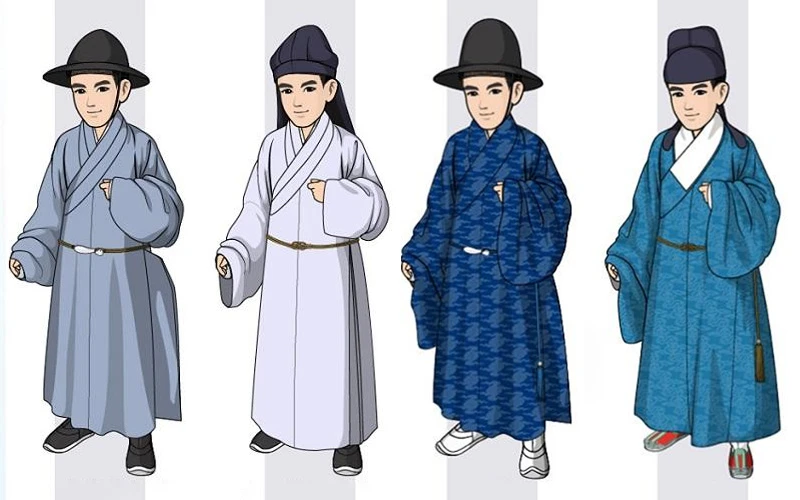
![Chinese Hanfu Hairstyle Tutorial – 3 [Without Wig Buns]](https://www.newhanfu.com/wp-content/uploads/2021/06/Chinese-Hanfu-Hairstyle-Tutorial-3-Without-Wig-Buns-0.jpg)
